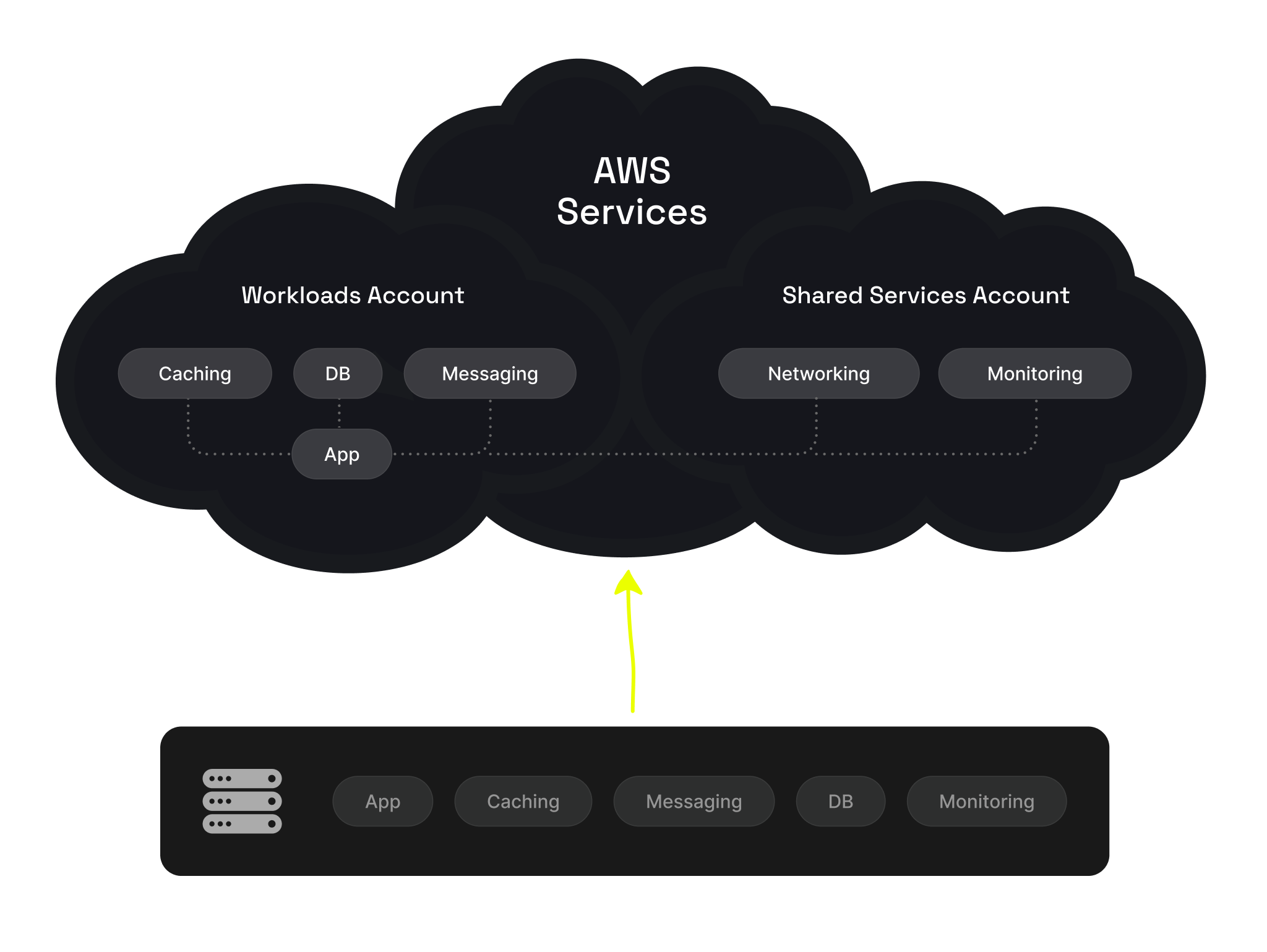-
01. Analysis
In the first step, we take a close look at your current IT landscape and business processes together. We assess the cloud readiness of your systems and identify the strengths and weaknesses of your existing architecture. The goal is to gain a well-founded understanding of what’s technically and organisationally possible – and where the potential for cloud migration lies. This forms the basis for all further decisions.
-
02. Planning
Based on the analysis and your specific requirements (such as timeline, budget, and business objectives), we develop a tailored cloud strategy – whether it’s to migrate, optimise, or rethink. We create architecture diagrams, define concrete work packages, and outline the target infrastructure. We also present alternative approaches to ensure you can make an informed decision.
For the planning phase, we draw on our in-depth cloud expertise (most of our engineers are certified AWS Solution Architects) and experiences from former cloud migration projects. -
03. Implementation
Once the approach is agreed upon, we move into implementation. Wherever suitable, we use Infrastructure as Code (IaC) – our preferred approach for delivering transparent, versioned and reproducible infrastructure, while always aligning with your requirements. At the same time, we apply FinOps principles to ensure continuous cost control – a key success factor in the cloud. We can manage the implementation entirely or support your internal team as needed.
Regardless of the approach, we make sure you stay informed at all times – for instance via development diaries and review sessions. -
04. Handover
Thanks to the use of IaC, we enable a structured and transparent handover to your internal operations team. The easy reproducibility and scalability of the infrastructure ensures long-term efficiency in operation and further development. Of course, we remain available for ongoing support, advice, or future iterations as required.
Cloud Migration
Companies should focus on what truly drives their value – and hosting software usually isn’t part of that. That’s where we come in: we craft your tailored cloud strategy, offer hands-on, collaborative guidance, and ensure smooth and reliable execution.

Cloud Migration = Cloud Migration?
Migrate
With a pure migration approach, your application remains largely unchanged. Instead of running systems on-premise, virtual machines or instances are now hosted in the cloud. This rehosting approach can usually be implemented quickly and is a practical way to resolve urgent operational bottlenecks. However, the true potential of the cloud – in terms of scalability, resilience or automation – remains untapped. For many companies, this is a valuable first step, but rarely the end goal.
- Rehosting
Optimise
Optimising means selectively adapting your application to run more efficiently in the cloud. This can involve minor technical adjustments or more extensive functional enhancements. The benefits: improved performance, easier maintenance, and access to initial cloud-native capabilities – all with manageable effort. Limitations arise when the legacy architecture reaches its limits and can no longer scale. This approach is ideal for applications that are set to evolve further in the medium term without requiring a complete rebuild.
- Refactor
- Replatform
Rethink
Rethinking means designing an application from the ground up for the cloud – with modern architectures, flexible components, and a strong focus on scalability, availability and innovation. It requires more effort, but unlocks entirely new possibilities, such as data-driven products or agile development. The trade-off: higher initial investment and more implementation effort. This strategy is especially worthwhile when digital services are – or are set to become – a core part of the business model.
- Rearchitect
- Rebuild
Our approach
When does
the cloud make sense
for my business?
Common misconceptions
From our projects and from conversations on infrastructure and cloud services, we've gathered the most common misconceptions, and analysed them for you. Our conclusion: when cloud initiatives are thoughtfully planned and properly implemented, existing concerns can be effectively addressed.

The cloud isn’t GDPR-compliant
There’s still a fair amount of scepticism towards US-based providers – especially in Germany. Many assume using the cloud automatically creates a data protection risk. In reality, all major cloud platforms today offer GDPR-compliant solutions, including European data regions, standard contractual clauses and robust technical safeguards.

My data isn’t safe in the cloud
A common concern is that sensitive business data is less secure in the cloud than in an on-premise data centre. In truth, reputable cloud providers often offer a significantly higher level of security – including encryption, access controls, auditing and certifications – than most organisations could achieve on their own.

The cloud is more expensive than my own data centre
Some believe the cloud only pays off for large-scale operations or doesn’t scale efficiently. In fact, cloud can be more cost-effective – if used correctly and strategically. One important distinction: simply lifting existing systems into the cloud is more likely to increase costs than rethinking the architecture and adopting a cloud-native approach.

Moving to the cloud makes me dependent on one provider
Vendor lock-in is a frequently cited concern. However, by using open standards or multi-cloud strategies, you can maintain a high level of flexibility – as long as it’s considered from the outset of your architecture.

Cloud migration is too complex and bears too many risks
The fear of complexity, downtime or project chaos keeps many companies from taking the leap. But today, there are mature migration strategies, proven step-by-step models (see also “Our approach”) and well-established tools that help minimise risk and make the transition predictable.

The cloud suffers too many outages
This myth persists – but the reality is different. Major cloud providers deliver significantly higher availability than most on-premise setups. With redundancy, failover mechanisms and global distribution, the impact of potential outages can be greatly reduced.

Reference project
Migration from on-prem to AWS cloud (start phase)
machtfit GmbH
November 2023 – February 2024
How we enabled our client’s growth strategy through the cloud


